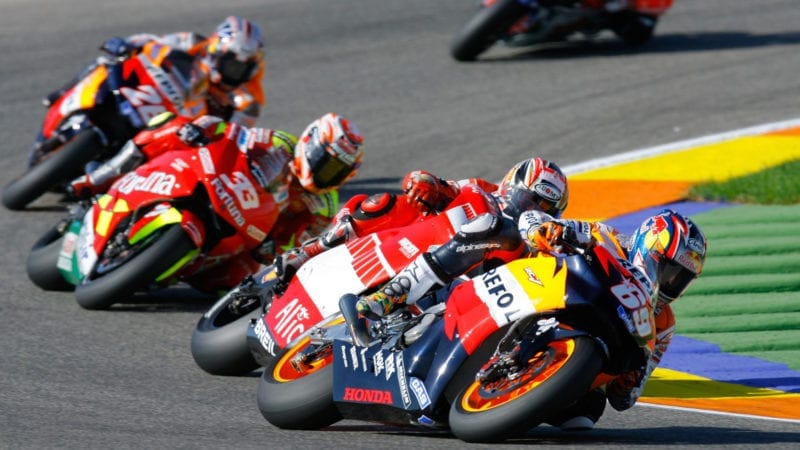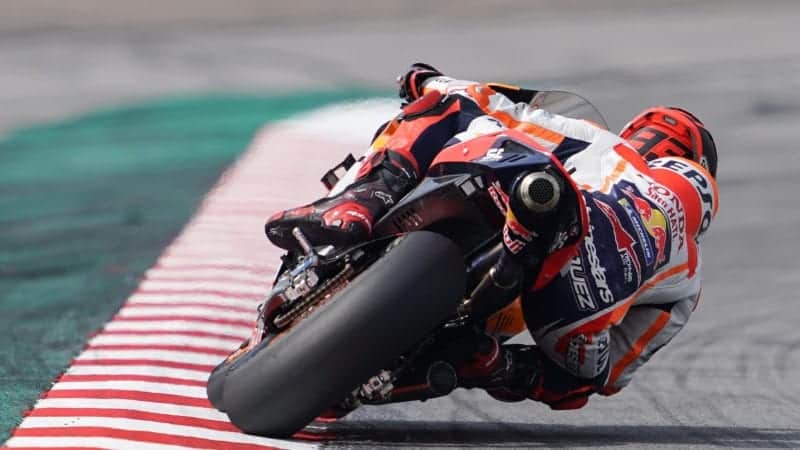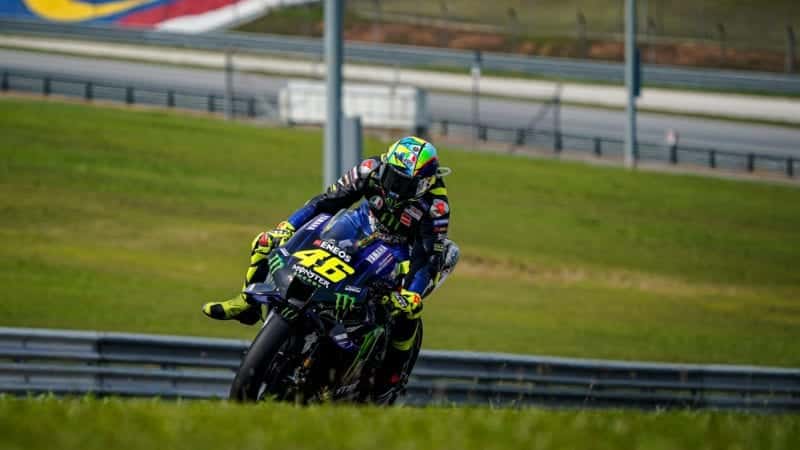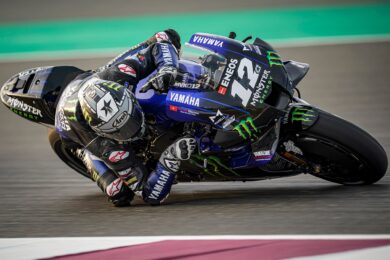“The tyre is more stable in the corner and has a good advantage in the acceleration area,” adds Taramasso. “Also, it helps stop the bike when the rider is using the rear tyre in braking. So the riders will need to brake differently and accelerate differently.”
Changes of tyre spec have always had a major effect on who wins the championship. Here’s half a dozen examples from the last two decades, both during open tyre competition and the spec-tyre era.
2000: During the penultimate 500cc season Michelin’s new 16.5-inch rear slick took over from the company’s usual 17in slick. The 16.5 gave more corner-exit traction so it helped Honda’s more powerful NSR500 to the detriment of Suzuki’s RGV500. By midseason Honda riders like Valentino Rossi had adapted their bikes to the 16.5, which is why Suzuki’s Kenny Roberts Jr score one race victory in the second half of the series. If Honda had adapted to the 16.5 sooner it’s likely Roberts wouldn’t have won the title.
2004: Michelin introduced a wider rear slick with improved edge grip that helped Yamaha’s new signing Rossi exploit the YZR-M1’s corner-speed advantage. At the same time it caused so much chatter with Honda’s RC211V that some RC211V riders called the new Michelin, “the Yamaha tyre”. Rossi won the title.

Nicky Hayden’s 2006 title challenge was helped by Michelin’s 2006 rear slick
Honda
2006: For the first time in several seasons Michelin’s tyres worked better with the Honda than with the Yamaha, compensating for the RC211V’s relative lack of mechanical grip. “I liked it as soon as I got on it,” said Honda’s Nicky Hayden. Meanwhile the tyre caused so much chatter with Rossi’s M1 that Michelin created a special tyre for Yamaha during the season. Hayden won the title.
2012: Midway through the championship Bridgestone changed its spec front tyre, causing Honda’s Casey Stoner problems during braking and corner entry and crucially damaging his hopes of retaining the MotoGP title. Stoner hated the softer-construction tyre. “It doesn’t give you enough support on the brakes – in my opinion it squishes too much,” he said. “The only way to get the support is with higher pressure, which gives you less contact patch.” Jorge Lorenzo won the title.
2014: Once again the pendulum swung, Bridgestone’s latest rear slick favouring Honda over Yamaha. “The new rear is much harder on the edge, so it’s better for Honda and worse for Yamaha, especially for me because I like to carry a lot of corner speed,” said Yamaha’s Lorenzo. “The Yamaha doesn’t turn when you slide with the throttle, in fact then you run wide, so when we don’t have lateral grip in the corner it’s a big problem.” Honda rookie Marc Márquez won the title, taking a record 13 victories.
2016: Michelin’s arrival in MotoGP played a significant part in Ducati’s renaissance. The Desmosedici was better than ever in 2016, but the Michelins helped the Italian brand end its 100-race victory drought. The Ducati makes its lap time via stability in the braking and acceleration phases, so it uses the edge of the tyres less. This just happened to suit the Michelins perfectly. “It’s luck, honestly,” said chief engineer Gigi Dall’Igna. Márquez won the title, while Ducati had its best season since the Stoner years.
No one knows who will get the most help from Michelin’s 2020 rear, but usually it’s the cleverest, most talented riders that work out how to get the maximum out of a new tyre or any other technical upgrade by adapting their riding technique to suit.
Rounds one and two at Jerez later this month won’t prove conclusively who are the winners and who are the losers with the new Michelin – the situation could change race by race as different teams and factories unlock the tyre’s secrets.



